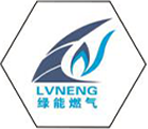
Nov . 10, 2024 15:21
Back to list
Understanding the Functionality and Applications of Pneumatic Control Valves in Industry
Understanding Pneumatic Valves Essential Components for Fluid Control Systems
Pneumatic valves are crucial components in various industrial applications, specifically in the control of compressed air systems. These valves manage the flow, pressure, and direction of air or gas within a pneumatic circuit, enabling precise control over machinery and processes. Understanding the function and significance of pneumatic valves is essential for anyone involved in manufacturing, automation, or any industry that utilizes pneumatic systems.
Types of Pneumatic Valves
There are several types of pneumatic valves, each designed for specific functions and applications. The most common types include
1. Directional Control Valves These valves manage the path that the compressed air takes within a system. They can be two-way, three-way, or four-way valves, depending on the requirements of the application. For instance, a four-way valve is typically used to control double-acting cylinders.
2. Pressure Control Valves These valves are responsible for regulating the pressure within pneumatic systems. They can be further categorized into relief valves, which prevent over-pressurization, and pressure regulators, which maintain a constant output pressure regardless of fluctuations in the input pressure.
3. Flow Control Valves Flow control valves manage the speed of actuators by adjusting the rate of air flow. This can be achieved through adjustable or fixed orifices. Controlling the speed of air flow is critical for ensuring the smooth operation of pneumatic actuators.
4. Check Valves These are one-way valves that allow air to flow in only one direction. They are typically used to prevent backflow in systems, ensuring that the air moves through the circuit as intended.
Working Principles
pneumatic valve

Pneumatic valves typically operate based on several principles, including mechanical movement, electrical signals, or pneumatic signals. Solenoid-operated valves are among the most widely used; these valves use electromagnetic coils to open or close the valve when an electrical current is applied.
Another mechanism is the manual control valve, which requires physical interaction to adjust the valve position. This type of valve is often used in situations where automated control is not necessary. Additionally, pilot-operated valves utilize the pressure of the air itself to control the larger flow rate, making them highly efficient for certain applications.
Importance of Pneumatic Valves
The importance of pneumatic valves cannot be overstated. They play a vital role in the efficiency and effectiveness of pneumatic systems. Properly functioning valves ensure that machinery operates smoothly, improving productivity and reducing the likelihood of downtime. Moreover, pneumatic valves can lead to energy savings by optimizing air flow and reducing excess consumption.
Additionally, these valves enhance safety in industrial settings. By implementing pressure control and relief valves, companies can mitigate the risks associated with over-pressurization, which could lead to equipment damage or personal injury. Furthermore, the use of check valves assists in the prevention of backflow, safeguarding the integrity of the system.
Applications
Pneumatic valves are prevalent in numerous fields, including manufacturing, automotive, food processing, packaging, and construction. In manufacturing plants, they are used to control machines that perform tasks such as assembly, painting, and material handling. In the automotive sector, pneumatic valves are integral in the operation of various systems, including brakes and suspension.
Conclusion
In summary, pneumatic valves serve as the backbone of pneumatic systems, ensuring efficient control of air flow, pressure, and movement. Understanding how these valves operate and their various types helps engineers and technicians design and maintain effective and safe pneumatic systems. As industries continue to evolve towards automation and increased efficiency, the role of pneumatic valves will remain pivotal in driving technological advancements and improving operational performance.
Latest news
-
Safety Valve Spring-Loaded Design Overpressure ProtectionNewsJul.25,2025
-
Precision Voltage Regulator AC5 Accuracy Grade PerformanceNewsJul.25,2025
-
Natural Gas Pressure Regulating Skid Industrial Pipeline ApplicationsNewsJul.25,2025
-
Natural Gas Filter Stainless Steel Mesh Element DesignNewsJul.25,2025
-
Gas Pressure Regulator Valve Direct-Acting Spring-Loaded DesignNewsJul.25,2025
-
Decompression Equipment Multi-Stage Heat Exchange System DesignNewsJul.25,2025

